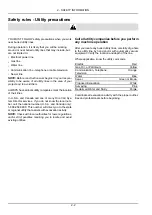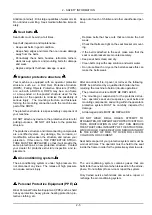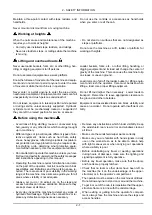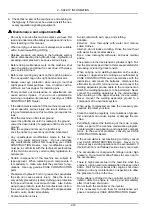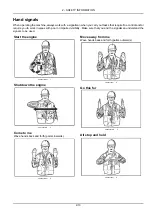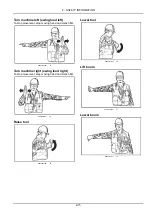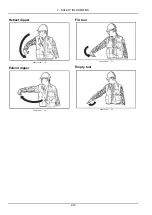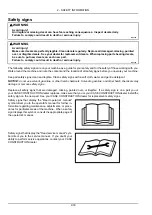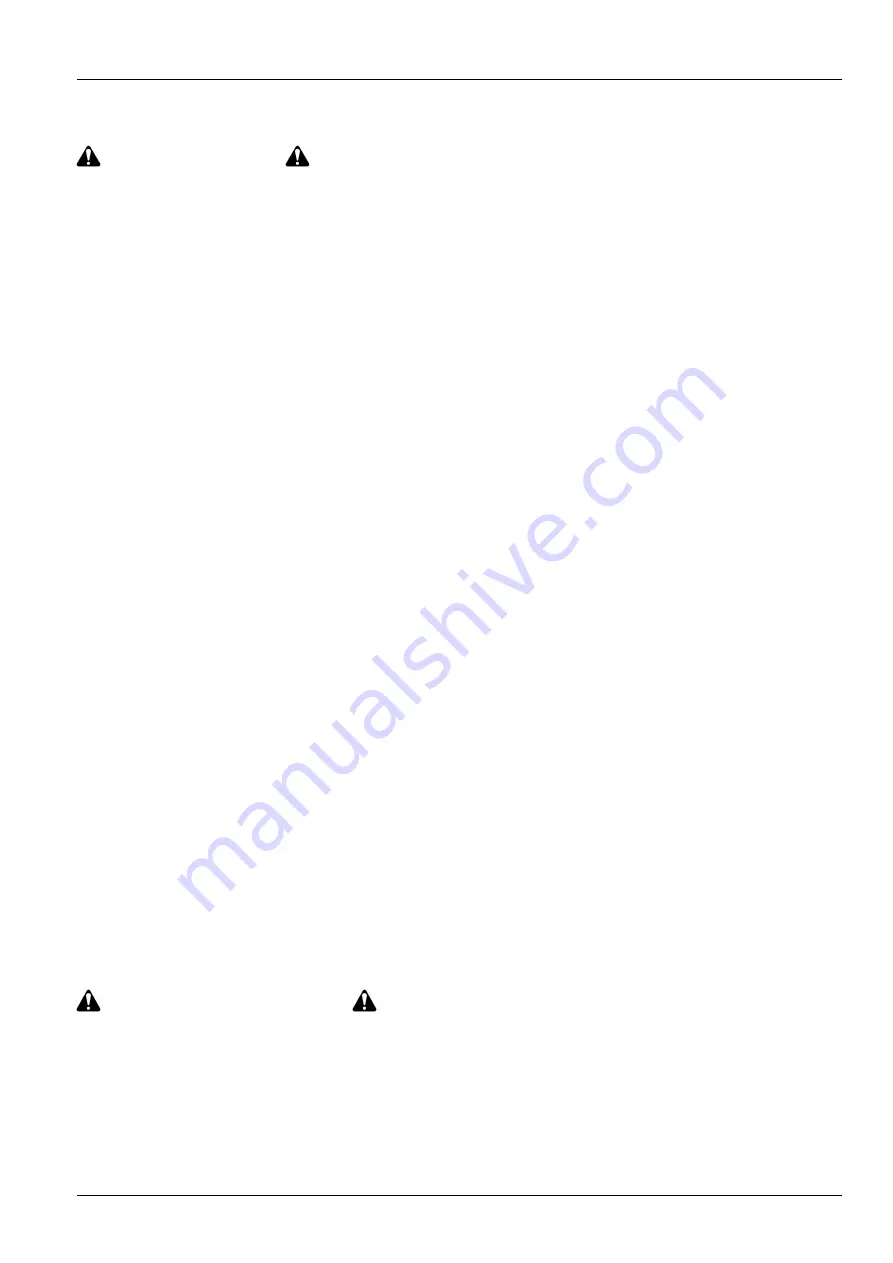
2 - SAFETY INFORMATION
Safety rules
General safety rules
Use caution when you operate the machine on slopes.
Raised equipment, full tanks and other loads will change
the center of gravity of the machine. The machine can
tip or roll over when near ditches and embankments or
uneven surfaces.
Never permit anyone other than the operator to ride on
the machine.
Never operate the machine under the influence of alcohol
or drugs, or while you are otherwise impaired.
When digging or using ground-engaging attachments, be
aware of buried cables. Contact local utilities to determine
the locations of services.
Pay attention to overhead power lines and hanging obsta-
cles. High voltage lines may require significant clearance
for safety.
Hydraulic oil or diesel fuel leaking under pressure can
penetrate the skin, causing serious injury or infection.
• DO NOT use your hand to check for leaks. Use a piece
of cardboard or paper.
• Stop the engine, remove the key, and relieve the pres-
sure before you connect or disconnect fluid lines.
• Make sure that all components are in good condition.
Tighten all connections before you start the engine or
pressurize the system.
• If hydraulic fluid or diesel fuel penetrates the skin, seek
medical attention immediately.
• Continuous long term contact with hydraulic fluid may
cause skin cancer. Avoid long term contact and wash
the skin promptly with soap and water.
Keep clear of moving parts.
Loose clothing, jewelry,
watches, long hair, and other loose or hanging items can
become entangled in moving parts.
Wear protective equipment when appropriate.
DO NOT attempt to remove material from any part of the
machine while it is being operated or while components
are in motion.
Make sure that all guards and shields are in good con-
dition and properly installed before you operate the ma-
chine. Never operate the machine with shields removed.
Always close access doors or panels before you operate
the machine.
Dirty or slippery steps, ladders, walkways, and platforms
can cause falls. Make sure these surfaces remain clean
and clear of debris.
A person or pet within the operating area of a machine can
be struck or crushed by the machine or its equipment. DO
NOT allow anyone to enter the work area.
Raised equipment and/or loads can fall unexpectedly and
crush persons underneath. Never allow anyone to enter
the area underneath raised equipment during operation.
Never operate the engine in enclosed spaces as harmful
exhaust gases may build up.
Before you start the machine, be sure that all controls are
in neutral or park lock position.
Start the engine only from the operator’s seat. If you
bypass the safety start switch, the engine can start with
the transmission in gear. Do not connect or short across
terminals on the starter solenoid. Attach jumper cables
as described in the manual. Starting in gear may cause
death or serious injury.
Always keep windows, mirrors, all lighting clean to pro-
vide the best possible visibility while you operate the ma-
chine.
Operate controls only when seated in the operator’s seat,
except for those controls expressly intended for use from
other locations.
Before you leave the machine:
1. Park the machine on a firm, level surface.
2. Lower the attachment to the ground.
3. Put all controls in neutral position.
4. Place the gate lock lever in central position.
5. Turn off the engine and remove the key.
General maintenance safety
Keep the area used for servicing the machine clean and
dry. Clean up spilled fluids.
Service the machine on a firm, level surface.
Install guards and shields after you service the machine.
Close all access doors and install all panels after servicing
the machine.
Do not attempt to clean, lubricate, clear obstructions, or
make adjustments to the machine while it is in motion or
while the engine is running.
Always make sure that working area is clear of tools,
parts, other persons and pets before you start operating
the machine.
2-3
Summary of Contents for CX37C
Page 16: ...1 GENERAL INFORMATION 1 10...
Page 64: ...3 CONTROLS AND INSTRUMENTS Footrest SMIL16MEX1264BA 17 3 12...
Page 136: ...5 TRANSPORT OPERATIONS 5 8...
Page 200: ...6 MAINTENANCE 6 64...
Page 204: ...7 TROUBLESHOOTING 7 4...
Page 212: ...8 SPECIFICATIONS 8 8...














